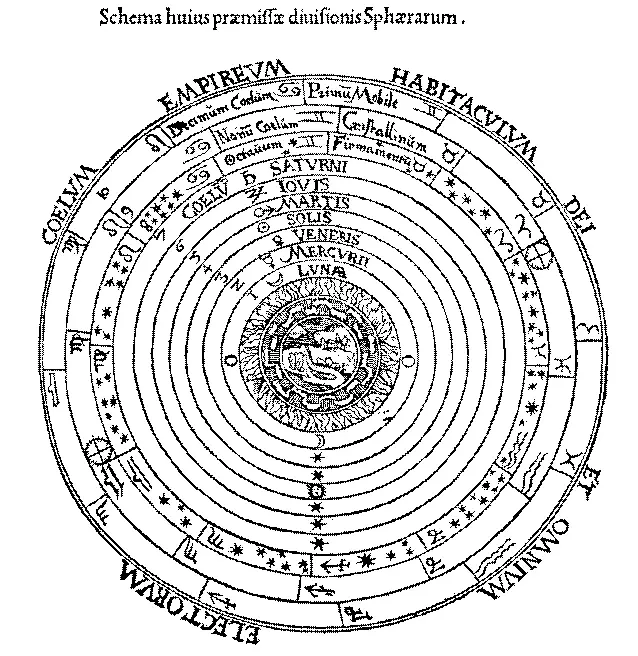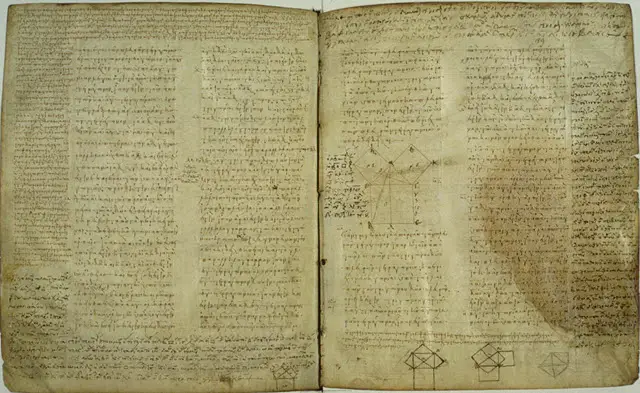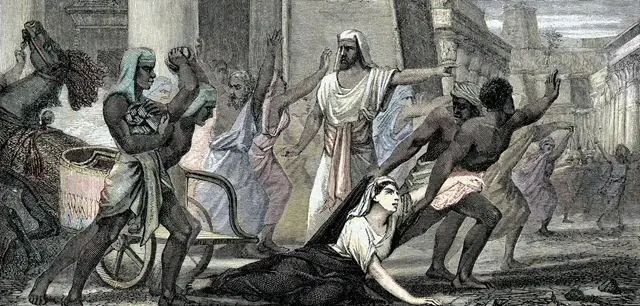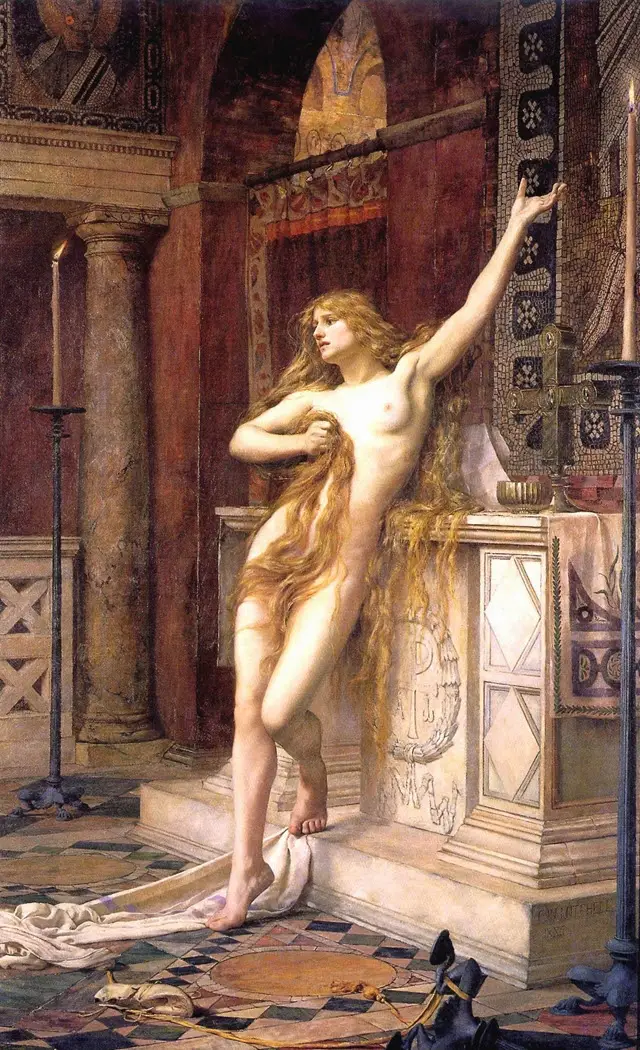
Source: Wikimedia Common
Hypatia was a mathematician, scientist, and philosopher from Alexandria. She was the daughter of Theon, a vital scientist, and mathematician, who also taught her science and philosophy.
Her influence in the city during the 4th century of the common era had been profound. People addressed her as ‘the blessed lady’ or ‘the holiest and revered philosopher’ by her students.
Anybody who briefly encountered her claimed that she was just, compassionate and wise.
Hypatia’s Childhood
Content
Hypatia was born in Alexandria of Egypt in circa 355 C.E. and died a horrific death in circa 415. Although her birth year is de, most of the scholars agree to this year. She was, if not the first, the earliest known female mathematician and philosopher. Her father, Theon, was her teacher. He is known for preserving Elements by Euclid and his commentaries on Ptolemys Almagest and Handy Tables. However, no information is available on her mother.
His school’s name was Mouseion, which was strictly conservative and open to only the elites. He taught only that which fitted his inclination, Plotinian Neoplatonism.
Extending on her father’s work, she broadened his template of teachings on Greek mathematics and astronomy. She further commented on Conics by Appolonius of Perga and Arithmetica of Diophantus of Alexandria.
She was well-trained in horse-riding, swimming, rowing as a part of physical activities, and in the art of speech to become a good orator. Her tutor was her father, who attempted to perfect his daughter in every field. Hence, she was also taught her arts and literature alongside mathematics and astrology.
It was when she travelled to Athens that she attended a school and proved to be a mathematician. She returned and took a job as a lecturer in her father’s school. She taught Arithmetica by Diophantus and also lectured on eminent personalities such as Plato and Aristotle. She gathered various men at her lectures from all over the world due to her oratory skills.
Hypatia’s Career

Source: Wikimedia Common
Inheriting her father’s profession, she dismissed the philosophy of Iamblichus and accepted the Plotinian Neoplatonism. At that time, philosophical schools were rich in Athens. However, Alexandria came second to Athens in terms of philosophical teachings. Hypatia continued to lecture on Plato and Aristotle while donning as tribon, a kind of cloak, as she publicly held lectures.
She expounded on her father’s template and taught the philosophy of Plotinus instead of that of Iamblichus. Her teachings were tolerant of all other religions such as Christianity, the Jews, and Islams (although recognized much later). Thus, she had cosmopolitan students from various backgrounds. The most prominent was Synesius, who later wrote her letters. This bundle of exchanged notes between Hypatia and Synesius was the evidence of her career.
She was excellent in science and maths, even better than her father. Some historians like Socrates of Constantinopole, Philostorgius, Damascius, and Hesychius have elaborated extensively on her life and career in their books through various references. She remained unmarried her whole life and devoted her life to expanding paganism.
Hypatia’s Works and Contribution

Source: Wikimedia Common
She was the first known woman mathematician who wrote extensively on maths, philosophy, and astronomy. She is also the second woman scientist after Marie Curie. She invented scientific instruments, including the astrolabe and the hydroscope or hydrometer.
The astrolabe was a hand-held device used to predict the time by looking at the stars’ positions. Similarly, it was a navigational instrument used by astronomers and astrologers. It survived the test of time, including the Golden Islamic Age, Medieval European Age, and the Rennaisance Age.
The second most notable invention is the hydrometer, an instrument for determining the specific gravity or relative density of liquids. Devised at the request of Synesius, this instrument has various usefulness depending upon differing commodities. Such as alcoholometer is used to measure the percentage of alcohol in spirits. Similarly, a saccharometer measures the sugar content of a solution.
She independently commented on Diophantus’ Arithmetica, which was a three-volume book. These writings are preserved in Arabian translations, while one surviving volume is in its original Greek. The Arabian extant works contain more verifications and comprehensive solutions than the actual Greek book.
Similarly, she wrote commentaries on the conic sections of Apollonius of Perga. She divided the cones into different parts using a plane. She developed concepts such as parabola, hyperbola, and ellipses. She made a comprehensive edition of Apollonius’s works, which was widely accepted and taught for many generations.
Unfortunately, history lost her work in oblivion.
She also wrote many historical treatises while also studying and teaching about astrolabe and hydrometer.
Hypatia also created Astronomical Canon, believed to be the commentaries on Almagest by Ptolemy. She not only edited Book III but all nine volumes of Almagest. Furthermore, Ptolemy’s table and calculation of the sun’s degrees while orbiting the Earth were rife with miscalculations. It was Hypatia whose new edition of the book mentioned above contained a table called the astronomical table. Compared to her prior works, she also edited Measurement of a Circle by Archimedes.
Later, philosophers Descartes and scientists such as Newton and Leibniz were inspired by her and expounded on her work. She was more an innovator than a teacher and more philosophical than religious.
Hypatia’s Philosophy
Hypatia was a Pagan at the time when dominant Christian rule persecuted them. Although inevitably drawn in these conflicts, the vanguard of intellectual circles revered her. She also housed many Christian and Jew students who later assumed high posts officially.
Hypatia’s philosophy was Neoplatonism, which is especially resonant today even after 1,600 years. During her time, considered the Age of Anxiety, people sought new spiritual paths that would make their lives less hectic and more rewarding. They were primarily dissatisfied with the prevailing dogmas and rooted more meaningful, beyond religious experiences to connect with the divine.
Neoplatonism by Hypatia overlaps both philosophy and spirituality, somewhat like Buddhism of Eastern philosophy. As the engagement with Eastern wisdom and philosophy is getting popular amongst people of all ages now, back then, Hypatia’s Neoplatonism offered a respite in people’s day-to-day lives. She not only focused on religious teachings, but her philosophy thrived in practising it. The core of her philosophical pursuit was to live well. Therefore, Neoplatonism was more than philosophy; it was a way of living. Her teachings were tolerant of all other religions, including Islam (which came into being much later).
That is what she did-taught some techniques practised to live a fuller, more aware, and enriching life that was attractive to everyone, whether a Christian, Jew, Pagan or even the non-believer. Who doesn’t want to live joyously? She taught her disciples a way of living intuitively by tapping into the divine powers situated inside us for guidance and insights to transform our lives. Her philosophy was not only intended to study academically but work on it universally.
Hypatia’s Killing and Aftermath

Source: Wikimedia Common
During the 4th century, the Roman Empire amalgamated a Christian entity into the purely pagan culture. Instead of a harmonious merging, some places were starting to idolize Christianity more than paganism. One such place was Alexandria of Egypt. It was tumultuous for all Jews, Christians, and pagans who were living there. Enter Hypatia, the practitioner and teacher of a pagan cult, and her peculiar mystical unification methodologies with the divine.
She fell prey to the current struggle between the orthodox and the radical pagans and met with an untimely and horrible death. Orestes, the prefect of Alexandria, was a pagan friend of Hypatia. At the same time, Cyril was the Bishop there. As a pagan and a friend, Orestes supported Hypatia, but her growing popularity and widespread acknowledgement of paganism over Christianity threatened Cyril.
Cyril accused Hypatia of corrupting youths and practising cults in the name of mathematics and religion. Eventually, a group of zealous mobsters attacked her and gruesomely killed her. They stripped her clothes, lynched publicly, and dragged throughout the streets until she succumbed to the throes of an undeserving death.
Whether it was the result of the power struggle between Cyril and Orestes or the consequence of a triggered Christian bishop is unknown. What is available in writings is that her killing has a political overtone and not just a religious reason. Regardless, her death stirred many controversies and shifted the religious stances of Alexandria.
Hypatia’s Legacy

Source: Wikimedia Common
The bigoted few mercilessly killed Hypatia. Yet, those who buried her never imagined that she was a seedling to an enormous tree, branching out from all sides for centuries to come. Her legacy has survived antiquity, the medieval age, and the early modern period to the 21st century.
When she died, people assumed that she’d be the last Alexandrian Neoplatonist. However, soon after, various lecture halls were established in Alexandria to teach paganism and Neoplatonism. It extended to the eastern Mediterranean, which produced many philosophers such as John Philoponus and Olympiodorus, the Older. Similarly, the other female Neoplatonist philosophers were Aedesia and Theodora.
During the Middle Ages, she was synonymous with Christian martyrs who died a similar death. Her lifelong commitment to her religion and refraining from marrying entitled her as the great virgin. She was associated with the Saint Catherine of Alexandria. She is mentioned even in the Byzantine encyclopedia, Suda. Hypatia (now christened) is attached to any woman who is wise, considerate, and exceedingly talented.
Besides that, she has been the protagonist of numerous books and novels, including children’s’ books. Voltaire has, in his book, written about Hypatia. He called her a free-thinking genius with a capacity to think outside of dogmas. Similarly, Socrates has mentioned Hypatia and openly praised this uniquely gifted philosopher.
During the 19th century, she was the basis of some seminal works on literature by European artists. She epitomized justice, beauty, and truth and became the idol of vulnerability. Soon, there were many plays, poems, novels, and biographies romanticizing Hypatia. French poet, Charles Leconte, penned her life and the Deistic narrative in his two poems. Charles Kingsley authored a bulky novel under Hypatia’s name, portraying her as the woman with a genius mind and petite body.
Bertrand Russell’s wife, Dora Russell, also wrote about Hypatia and highlighted the importance of women’s education. Some of the major writings of the 20th century revolved around the life of Hypatia. It includes works of Marcel Proust and Iain Pears.
Her life continued to be fictionalized even during the 21st century. From Charlotte Kramer to Youssef Zeidan to Ki Longfellow, she has been the central character who spins the novel’s plot. The movie Agora is somewhat an ode to her, depicting her rise to fame and her shortcomings. She has also been portrayed in the T.V. series, such as Cosmos by Carl Sagan and The Good Place.
Conclusion
Although Hypatia maintained such a mythic aura capable of rupturing her contributions altogether, she is mostly known for her lynching and subsequent death. Since then, she has forever remained as the symbol of a tussle between science and religion. Moreover, she is the standing figurine of feminism and pagan martyrdom. Hailing from Egypt, most people also admire her as a black woman martyr.
We can translate her life into a book, a movie, or even a series. However, it wouldn’t be wrong to call it a tragedy because she that brought her fame became the reason for her sad demise. Today, she is the emblem of a powerful, learned, and fearless woman.

Hypatia’s life is not well documented, even the exact year of her birth is unknown, however her gruesome death at the hands of fanatics has made her into a legend and overshadowed her career as a mathematician, philosopher, teacher and political advisor.